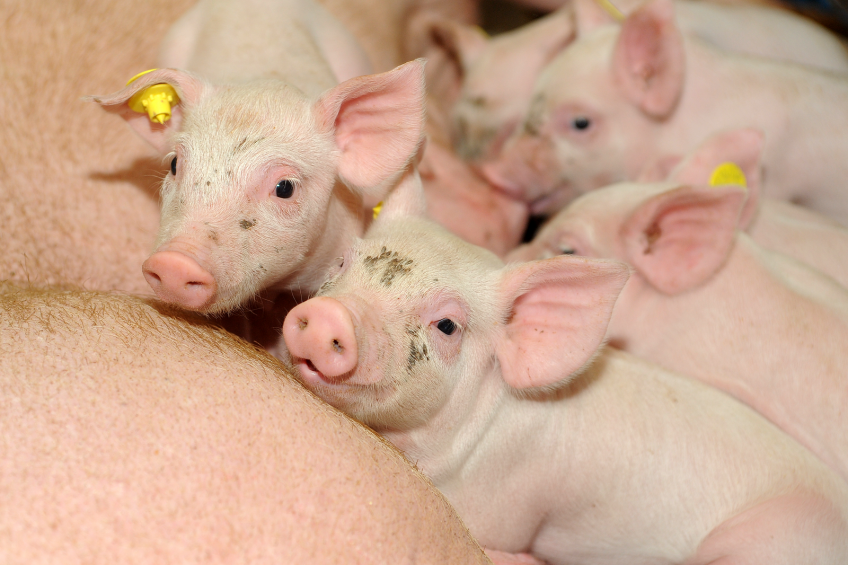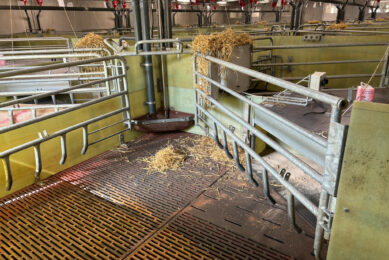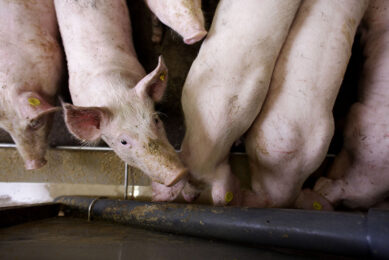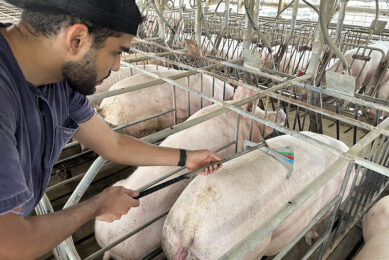Sow feed intake: A key objective in lactation

As time goes by, increasing knowledge has become available on what factors are favourable for sows during lactation. For a long time, probiotic yeast has been shown to be beneficial. Today, new data ?confirm its effect on feed intake and the relation with other parameters around this difficult stage.
Over the past twenty years, genetic progress has changed the face of pig production – and its problems too. Hyper-prolificacy has been associated with smaller piglets, increased litter heterogeneity and mortality. Sow energy supply in lactation is key, especially in early lactation. A good lactation set-up is positively reflected on the piglets’ performance and sow’s body condition: this will influence future performances.
Sow energy requirements are very high during lactation to accomodate milk production and maintenance, and the balance between supply and requirements is inevitably negative.
The sow has to draw from her body reserve, and body weight loss and fat loss are normal processes during lactation. However, while modern sows have more piglets to feed, genetic selection has also favoured leaner sows (less back fat). As a consequence, a sow can lose muscle tissue, too, and this is particularly detrimental to her future performance. Excessive weight loss (>10%) during lactation has been shown to impact:
Reproduction: wean-to-oestrus interval is increased, fertil-ity is decreased.
- Future litter size: a phenomenon known as ‘second litter syndrome’: a correlation has been shown between weight loss during the first lactation and a sow’s performance in the following farrowing cycle.
- In this context, feed intake during lactation is critical and should be optimal to ensure sufficient milk production and limit sow body weight loss.
Feed intake can be limited by environmental stress factors such as heat stress, as well as by poor digestive comfort: intestinal dysbiosis or constipation (common problems during the peri-partum phase). Probiotic yeast, proven to enhance digestive comfort, is able to help increase sow feed intake during lactation. This has some positive repercussions on the rest of the production cycle.
Figure 1 – The effect of S.c boulardii CNCM I-1079* on sow feed intake according to lactation duration and continent. zoom in
Figure 2 – Effect of S.c boulardii CNCM I-1079* supplementation on sow feed intake (kg/d). zoom in
Probiotic yeast in piglet and sow feeds
Live yeast, Saccharomyces cerevisiae boulardii CNCM I-1079, is a probiotic yeast, registered as zootechnical feed additive for use in piglet and sow feed (Levucell SB, Lallemand Animal Nutrition, France). One of its proven benefits is the improvement of sow digestive comfort around parturition.
Numerous studies have shown positive effects on the sow’s response to stress in peri-partum: e.g. digestive transit regulation and stimulation of a sow’s feed intake. When it comes to feed intake measurement, however, inter-individual variability remains high, even when parameters such as parity, feed or environment are fixed. Indeed, too many factors linked to the animal – the environment and the farmer’s practices – have an impact on the appetite during the lactation phase and make a sow herd a heterogeneous population in terms of feed intake. This makes it all the more difficult to design trials to predict the level of improvement, with an additive for example.
In order to be able to quantitatively evaluate the effect of this probiotic yeast on sow feed intake, it was therefore decided to conduct a meta-analysis covering the ten most recent trials, six of which were performed in Europe and four in North America. This statistical method, recognised by scientists, ensures that the effects are significant and the conclusions robust. The trial database of this meta-analysis only included comparisons between feed without added yeast (control) and feed supplemented with the probiotic yeast strain from 1 to 2 x 106 CFU/g of feed. Trials without individual consumption measurements, or trials realised on restricted sows, were not considered.
Results of the meta-analysis
First of all, let’s look more precisely at the repartition of the trial results (Figure 1). Among the ten trials, eight of them (80%) showed a positive effect of the probiotic yeast strain on sow feed intake, four of them being significantly positive. The effect of the yeast strain on consumption varied from -0.2 to +1.0 kg/day. It was shown that this effect was not affected by the date of trial, supplementation dose, supplementation time prior to farrowing and, at the end, the consumption level observed for control groups. The repartition of the trials according to continent and lactation duration is depicted in Figure 1. The result of the meta-analysis showed an overall positive, significant effect (P< 0.05) of S.c. boulardii CNCM I-1079 on feed intake in lactation: + 0.260 kg/day on average (Figure 2). This meta-analysis was accepted for publication at the ADSA-ASAS Joint Annual Meeting 2015 in Orlando, FL, USA. It can be concluded that S.c. boulardii CNCM I-1079 appears to be an efficient solution to ensure optimal sow consumption during lactation.
Beyond feed intake measurement
Thus, the meta-analysis indicates that live S.c. boulardii CNCM I-1079 yeast is able to increase sow feed intake. But what about the longer-term consequences on the piglets’ growth and a sow’s performance? An exhaustive study, which has not been included in the meta-analysis, was conducted in 2014 in China (Huazhong Agricultural University, internal results) to help answer this question. The study measured the effect of the probiotic yeast not only on sow feed intake, but also on sow body weight and digestive comfort criteria (constipation grade assessed according to the number of consecutive days without faecal emission). It also looked at the piglets’ weight and average daily gain during lactation and the long-term effects on a sow’s reproductive performance.
Figure 3 – Effect of sow diet supplementation on sow weight loss during lactation. zoom in
Table 1 – Effect of the sow diet supplementation on piglet average daily gain during lactation. zoom in
In total, 70 Large White sows were included in the trial, divided between two equivalent groups (average parity: 3.99). The trial lasted for the whole gestation and lactation periods (21 days of lactation). Both groups of sows received the same gestation and lactation diets. In addition, one group received 1 x 106 CFU/g of feed of S.c. boulardii CNCM I-1079.
- Firstly, the live yeast showed a positive effect on the sows’ digestive transit during lactation: with the probiotic yeast, the proportion of non-constipated sows increased from 12.9% to 35.5%. And there was no sow with severe constipation, compared with almost 10% in the control group.
- The trial further confirmed the positive effect of the supplement on sow feed intake, with an important effect: during the three weeks of lactation, the treated sows ate on average an extra 530 g/day more than the control sows. Interestingly; this effect was particularly significant (P<0.01) during the first week of lactation. The positive effect of the probiotic yeast on digestive transit can help explain this higher feed intake.
- As a consequence, the sows appear to use less body reserve in lactation: body weight loss in lactation is significantly reduced (Figure 3). Consequently, the weaning-to-oestrus interval is reduced in the group receiving the probiotic yeast strain supplement.
- Thanks to the supplementation, the sows eat more and use less body reserve for milk production. In addition, sows also certainly produce more milk, as indicated by improved piglet growth: piglet average daily gain was significantly increased for the live yeast group during the three weeks of lactation. Overall, piglets gained an extra 26.5 g/day on average in the treated group, equivalent to a 11.4% increase of ADG (Table 1). Thus, piglets have a higher weaning weight, which should help them get through this stressful stage in better shape. This additional weight after weaning has a strong impact on the economical profits of the farm.
Lactation is a critical period of the pig production cycle.
Lactation
Lactation is a critical period of the pig production cycle and sow feed intake can represent a limiting factor on performance. Extra care should be taken to encourage feed intake in early lactation in order to optimise milk production and prevent sow muscle loss. Thanks to its positive effect on digestive comfort, live yeast S.c. boulardii CNCM I-1079 appears to be a valuable tool for lactating sow management by helping increase feed intake, with positive impact on sows body condition, piglets growth and subsequent reproduction.
References available on request.











